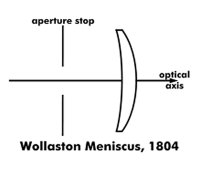thuggins
Member
I just got an Agfa Clack, amazingly small and light for such big negatives. Apart from that the camera is known for its combination of meniscus lens and curved film plane. It is apparent that the convex surface of the lens faces out. The lens on the Baby Brownie is also convex out, and it also has a curved film plane.
Pictures on the interweb typically show the convex surface facing in, toward the film plane. I'm fairly certain that both the Brownie Hawkeye and Foldex 20 are configured that way (at least that's the way it went when I reassembled my Brownie Hawkeye). Both of those have a flat film plane.
I'm assuming that the convex out/curved film plane produces a better image, but its application is limited by restrictions on camera size and shape.
Pictures on the interweb typically show the convex surface facing in, toward the film plane. I'm fairly certain that both the Brownie Hawkeye and Foldex 20 are configured that way (at least that's the way it went when I reassembled my Brownie Hawkeye). Both of those have a flat film plane.
I'm assuming that the convex out/curved film plane produces a better image, but its application is limited by restrictions on camera size and shape.











